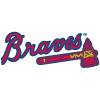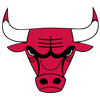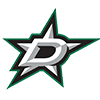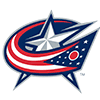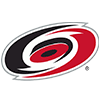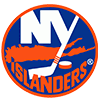It's become in many ways increasingly challenging to identify true sleepers with so much data available to analyze players. While we could argue over the definition, however, these five hitters either popped on my spreadsheet as projected values or possess at least one standout skill. The ADP market is generally quite efficient, as players with risks and question marks like these get pushed farther down the draft board. There's a low likelihood that these players hit, but all of them come with enough potential payoff to be worth targeting late in drafts. We'll also finish off with a wild card who's performing well in Spring Training so far.
Luis Garcia (2B/SS, WAS)
The path for Garcia to surpass his current ADP involves him showing that his sneaky power skills aren't a fluke. Last season, the typically light-hitting middle infielder improved his barrel rate from 5.2 percent to 7.5 percent and increased his maximum exit velocity to 113.4 mph, which sits in the 92nd percentile. Garcia's launch angle contributes to the problem, with his career groundball rate sitting at 54.7 percent.

Garcia also improved his average exit velocity on flyballs and liners to 94.2 mph, up over two mph from 2021 (91.9 mph). Other hitters with a similar average exit velocity on those batted balls and a maximum exit velocity of 113 mph or higher include Nelson Cruz, Ian Happ, Josh Naylor and Jose Abreu. All of those hitters have more of a power-hitting track record than Garcia
It's become in many ways increasingly challenging to identify true sleepers with so much data available to analyze players. While we could argue over the definition, however, these five hitters either popped on my spreadsheet as projected values or possess at least one standout skill. The ADP market is generally quite efficient, as players with risks and question marks like these get pushed farther down the draft board. There's a low likelihood that these players hit, but all of them come with enough potential payoff to be worth targeting late in drafts. We'll also finish off with a wild card who's performing well in Spring Training so far.
Luis Garcia (2B/SS, WAS)
The path for Garcia to surpass his current ADP involves him showing that his sneaky power skills aren't a fluke. Last season, the typically light-hitting middle infielder improved his barrel rate from 5.2 percent to 7.5 percent and increased his maximum exit velocity to 113.4 mph, which sits in the 92nd percentile. Garcia's launch angle contributes to the problem, with his career groundball rate sitting at 54.7 percent.

Garcia also improved his average exit velocity on flyballs and liners to 94.2 mph, up over two mph from 2021 (91.9 mph). Other hitters with a similar average exit velocity on those batted balls and a maximum exit velocity of 113 mph or higher include Nelson Cruz, Ian Happ, Josh Naylor and Jose Abreu. All of those hitters have more of a power-hitting track record than Garcia does, but it hints that more homers could be coming. It seems like a concerted effort by Garcia, as he became slightly more aggressive with a chase rate of 43.7 percent last season, an increase of over four points from 2021, with his contact rate decreasing by three points as a result.
Garcia's ADP hovers around pick 300, and he expects to bat in the bottom of the Nationals lineup. He has some strong-side platoon concerns with a .589 OPS against lefties and a .729 OPS against righties. While his OPS against righties isn't exciting, it could improve if he maintains the ability to drive flyballs and liners. He's a solid middle infield target with the potential to set career highs in all categories and a high-end outcome of 15+ home runs.
Jeimer Candelario (3B, WAS)
Is it a mistake to target multiple Nationals hitters? Maybe, but here we go. Candelario should see a big boost going from Detroit to Washington, given the Tigers rank last in home run park factor while the Nationals rank 11th. Candelario also dealt with a shoulder injury that landed him on the injured list in early June last year, which probably impacted the relative consistency in his batted-ball profile.
That's evident in Candelario's line drive rate, which fell to 18.8 percent, down over seven points from 2021. That drop seems fluky, as Candelario boasted a healthy line drive rate of over 22 percent over the past three seasons. When hitters battle shoulder injuries, it can impact the consistency at which they strike the ball, so there's a chance his line drive rate bounces back.

Candelario became slightly more aggressive from a chase rate perspective, with an increase of over four points from 2021 as seen in the rolling graph above. His contact rates remained similar, though the more aggressive approach stood out since it led to a lower walk rate and on-base percentage. Maybe the shoulder injury didn't impact his power skills much, with similar barrel rates to 2021 and an increase in average exit velocity on FB/LD. Candelario averaged 93 mph on flyballs and line drives in 2022, an increased from 2021(91.7 mph) and nearly matched 2019 (92.9 mph).
He gained a home park upgrade and moved from the worst offense (81 wRC+) to the 22nd-ranked offense (93 wRC+), judging by last year's numbers. (If we remove Juan Soto from that formula, the Nationals team wRC+ would drop closer to the Tigers.) The third base position heads down a scary road after the top 12 or so players, so Candelario profiles better as a bench stash or corner infielder option. Over the past couple of weeks, Candelario's ADP has hovered around pick 400. He's worth a late-round pick in a mixed 15-team league as a potential bounce-back candidate.
Garrett Cooper (1B, MIA)
Cooper draws me in each season due to his linebacker size and power skills. Injuries have impacted Cooper's productivity, with wrist, elbow and lower-body issues plus a concussion all costing him time last season. He also lost playing time to other hitters on the Marlins, but his skills remain enticing. Cooper compiled a career-high in plate appearances last year at 469, up from his previous high of 421 in 2019. While one might think his BABIP could point to incoming regression, he sports a healthy line-drive rate of 25.3 percent for his career.

Cooper boasts above-average contact rates with a league-average chase rate. He posted a barrel rate north of 10 percent for the past two seasons, accompanied by near-elite maximum exit velocities. As noted with Luis Garcia earlier, Cooper averaged a quality 94.3 mph exit velocity, good for 63rd out of 225 qualified hitters. The chart above shows hitters who averaged an exit velocity on flyball and liners between 94 to 95 mph, with their max exit velocity also included. Cooper trailed Garcia in max EV by a narrow 130.0-112.6 margin. As a hitter with all the fantasy-relevant skills needed other than speed, Cooper is worth taking on a plunge on as a bench bat or corner infielder.
Christian Arroyo (2B, BOS)
Since the news that Arroyo should hold down the second base job for the Red Sox, his ADP has crept up about 50 or more picks. Arroyo had his best season last year and displayed a good hit tool, spraying the ball all over the field with a healthy line drive rate. Although Arroyo chased higher than one would like at 43 percent, he boasts above-average contact rates, giving him a high floor. The visual below illustrates how he covers the entire plate, with very few whiffs inside the zone.

Arroyo's contact-based profile means he lacks notable power with a 6.4 percent barrel rate, though his 112.2 mph maximum exit velocity (83rd percentile) hints at raw power. When Arroyo elevated the ball, he posted a 94 mph average exit velocity on flyball and line drives, similar to Darin Ruf and Jared Walsh. There's an upside scenario in which Arroyo compiles double-digit home runs and stolen bases alongside a quality batting average, though his low lineup spot remains a concern. Middle infield seems to dry up early, though, and Arroyo at least holds a secure lineup spot to begin the season.
Luke Voit (1B, MIL)
Finally, let's close out with Luke Voit, who signed a minor-league deal with the Brewers which included an invite to spring training. It's surprising that Voit hasn't found a more secure home after posting a career high in plate appearances (568). Voit profiles as a DH due to his poor defensive skills but possesses some offensive abilities. He uses a prototypical pull-heavy (48.9 percent) and flyball-heavy (40.4 percent) approach. Unfortunately, Voit's chase rate increased to 34.4 percent last season, a few points above his career norm. His has chase rate gradually increased over the past several seasons, as seen below, which isn't a positive sign.

Voit has consistently rocked excellent barrel rates, including a 14.7 percent mark last year, and his 95.4 mph average exit velocity on flyballs and liners ranked 38th in the league. While there may not be any major skills dropoffs incoming, however, his playing time remains questionable. There's a chance Voit doesn't even make the Brewers roster since he isn't on the 40-man. Assuming he makes the team, Voit's most realistic scenario involves a short-side platoon, with Rowdy Tellez and Jesse Winker taking up the 1B and DH spots against righties. I'm probably wish-casting Voit as a fantasy-relevant option in 2023, as the odds seem stacked against him.
Wild Card: Michael Massey (2B, KC)
Since we can't drool over Adalberto Mondesi anymore on the Royals and hope for health, let's pivot to Michael Massey. Last year, he debuted and showed some power and speed in a small sample. As with Voit above, Massey used a prototypical power-hitter approach, with an even higher pull rate (52.3 percent) and flyball rate (44.4 percent). Although his home ballpark doesn't do him any favors for power, Massey appeared unlucky from an HR/FB perspective.

Massey's plate discipline raises red flags, as seen in the visual above. He chased higher than the league average and had a contact rate of 73.2 percent, a few points below the norm. It's probably not the best idea to jump to conclusions on his power, but Massey had a 13 percent barrel rate despite a measly 108.8 mph maximum exit velocity. There's a good chance the barrel rate declines with more batted ball events. Massey flashed average to above-average power skills, with a solid 93 mph average exit velocity on flyball and line drives, similar to Brandon Belt and infielder Diego Castillo.
Though the Royals might run more often this season, they aligned with the league average last year with a 75 percent stolen base success rate, so perhaps a big change isn't coming, which might impact Massey's stolen base ceiling. I hesitate to weigh the splits too much in small samples, though Massey posted a .646 OPS against lefties and a .693 OPS versus righties. If we use a .700 OPS as a threshold for concern, it's even more worrisome that he didn't crush on either side of the plate. There's also a chance that Massey loses out to Nicky Lopez, who boasts a defensive-first profile. Massey may not have the most exciting profile, but the upside scenario for him involves 12-15 home runs, 10-12 stolen bases, and a .240 batting average.














